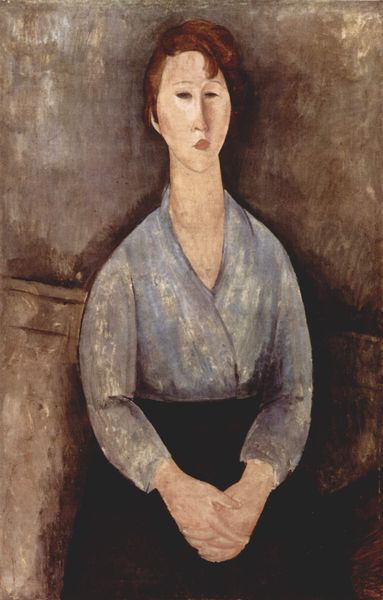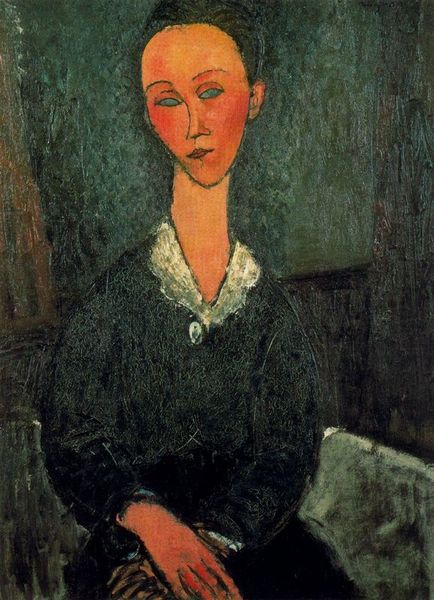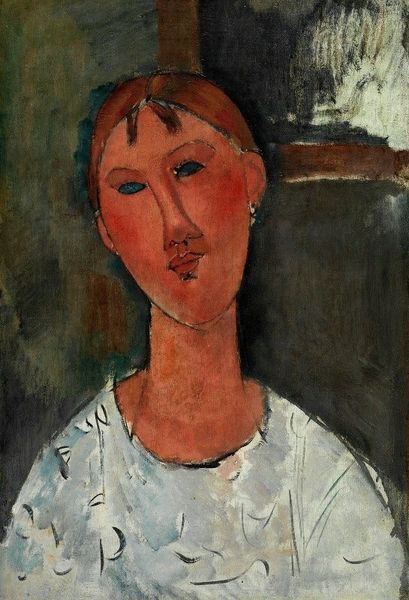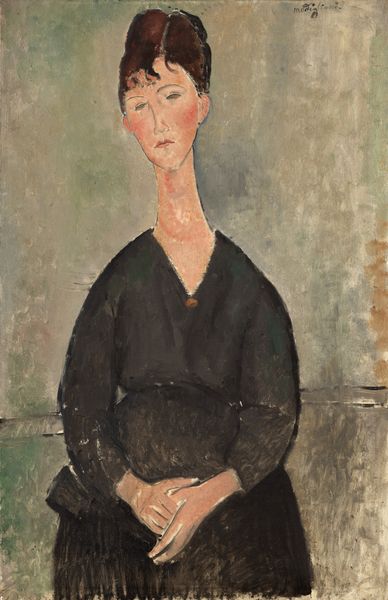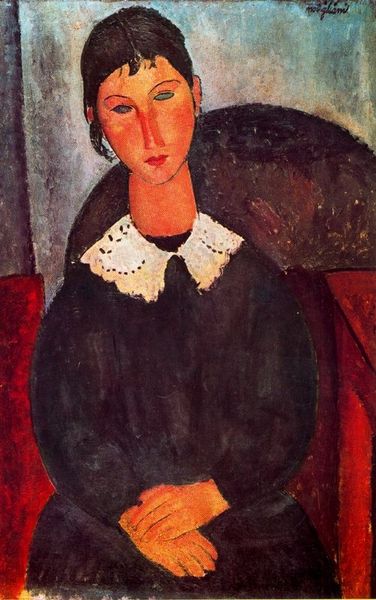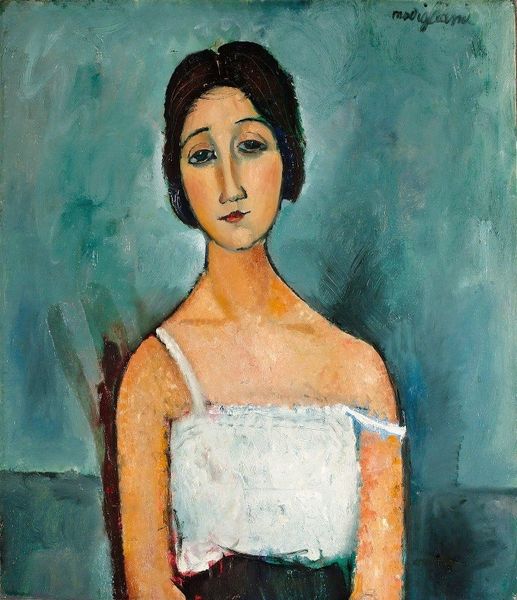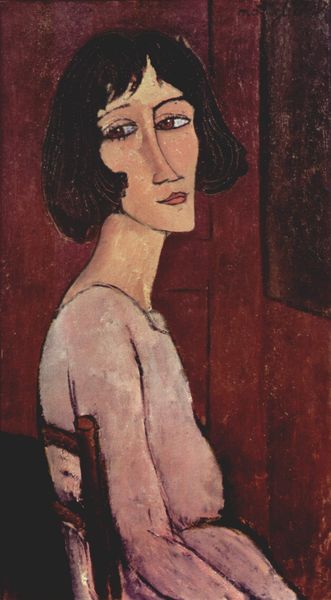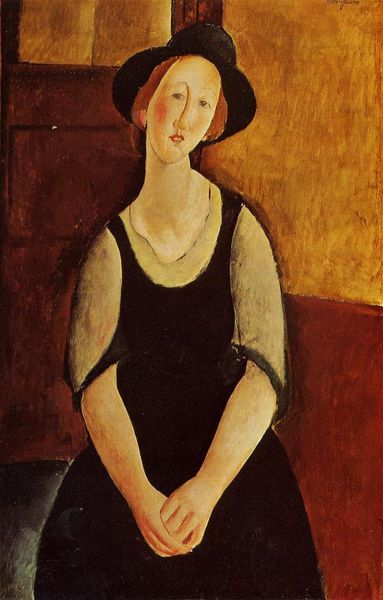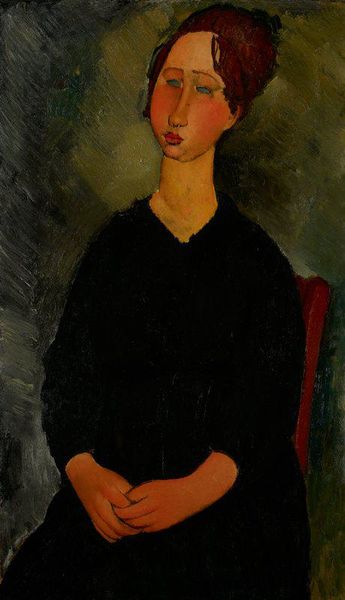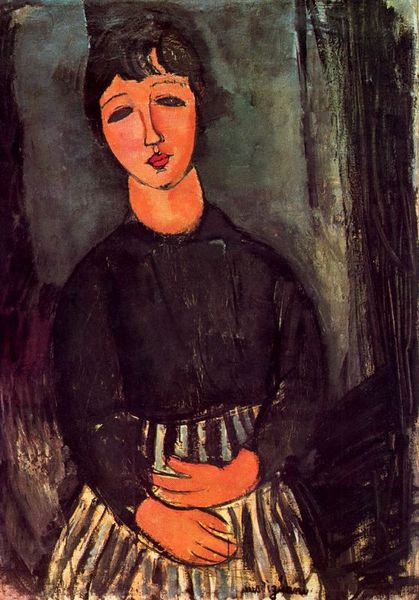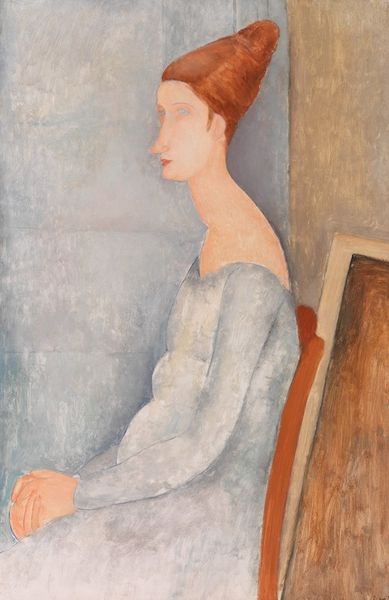
painting, oil-paint
#
portrait
#
painting
#
oil-paint
#
figuration
#
oil painting
#
portrait drawing
#
italian-renaissance
Dimensions: 70 x 45 cm
Copyright: Public domain
Curator: The elongated features immediately give this portrait a melancholic aura, wouldn't you agree? Editor: Yes, the way her neck stretches upward evokes a sense of longing, of reaching for something just beyond her grasp. Shall we delve into who we see depicted here? Curator: Of course. This is Amedeo Modigliani's "Portrait of Lunia Czechowska in white blouse", rendered in 1917 with oil on canvas. It belongs to a private collection. I am struck by the stylization he employs; the face almost becomes a mask, enigmatic and serene. It evokes certain archaic Greek sculptures. Editor: Modigliani's choice to leave her eyes blank certainly contributes to the mysterious effect. It makes one consider how women were often rendered voiceless, as objects of male desire, which echoes how this was painted during a crucial juncture of women's rights movements. How does Lunia, then, negotiate such representation? Curator: Perhaps in her simplicity. Look at her blouse, almost monastic. It's as though she internalizes the gaze, becoming her own symbol rather than an object defined solely by external perception. What do you think? Editor: I think the ambiguity works. We could read this portrait as passive, or equally as a subtle act of resistance. Even that single, understated brooch speaks volumes—a quiet assertion of identity in a world that might seek to erase it. Curator: Beautifully said. And the muted palette certainly contributes to the painting's introverted mood. Those grays and browns frame a moment suspended in time. Editor: Absolutely. The way Modigliani balances abstraction and figuration is just striking. There's a profound humanity there, struggling to be seen. It reveals more than the conventional mode of portraiture where wealth and affluence dominate the picture. Curator: It leaves us to imagine her inner world. What did she believe in, desire, fear? These are not depicted through superficial details, but suggested through subtle forms. Editor: Exactly. Art has the power to resist fixed narratives, which is what is so fascinating about this particular painting, as we come face-to-face with such an exquisite depiction. It’s the lack of narrative that tells its own story, in its way. Curator: This glimpse we had offered today speaks of lasting dialogues across time, of representation, agency, and interpretation, and how artworks carry a wealth of meaning, always awaiting to be unpacked.
Comments
No comments
Be the first to comment and join the conversation on the ultimate creative platform.
